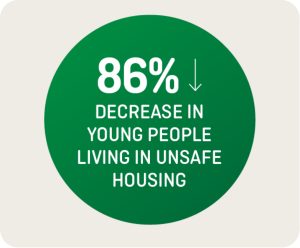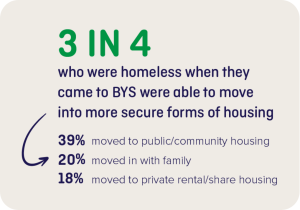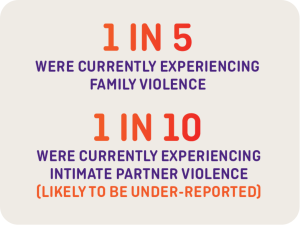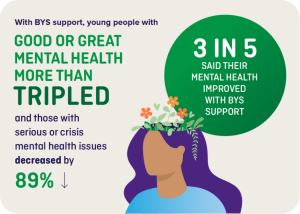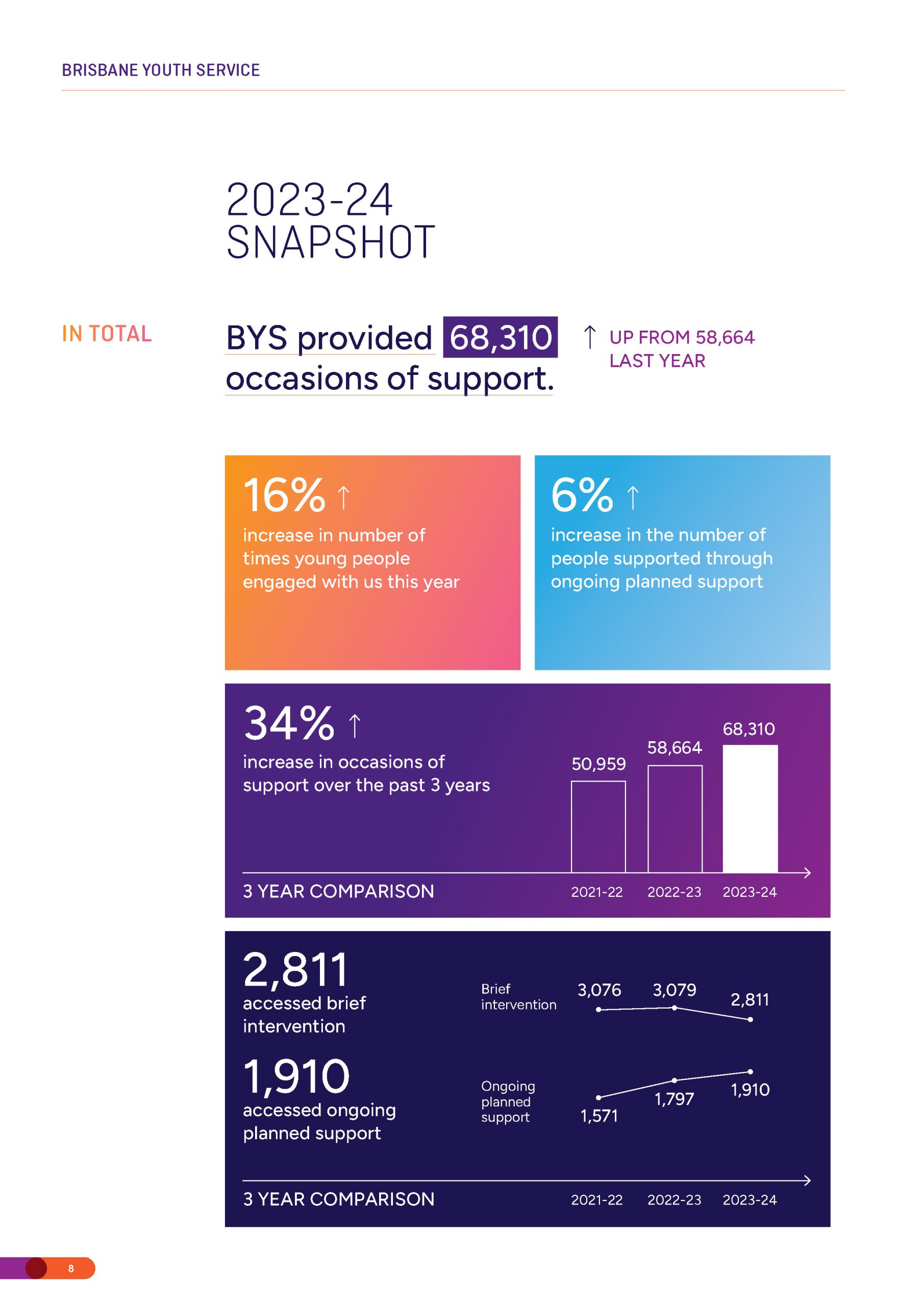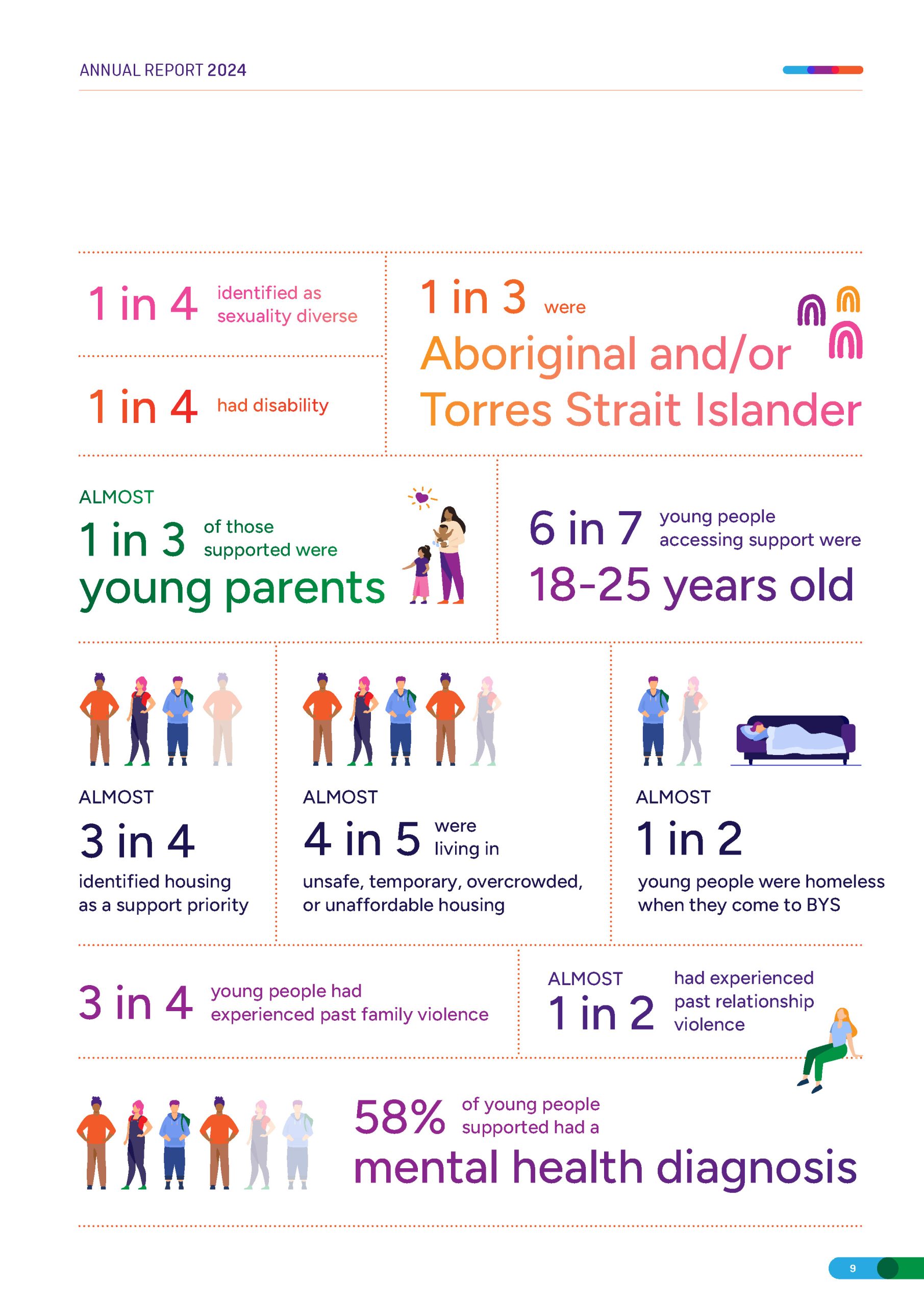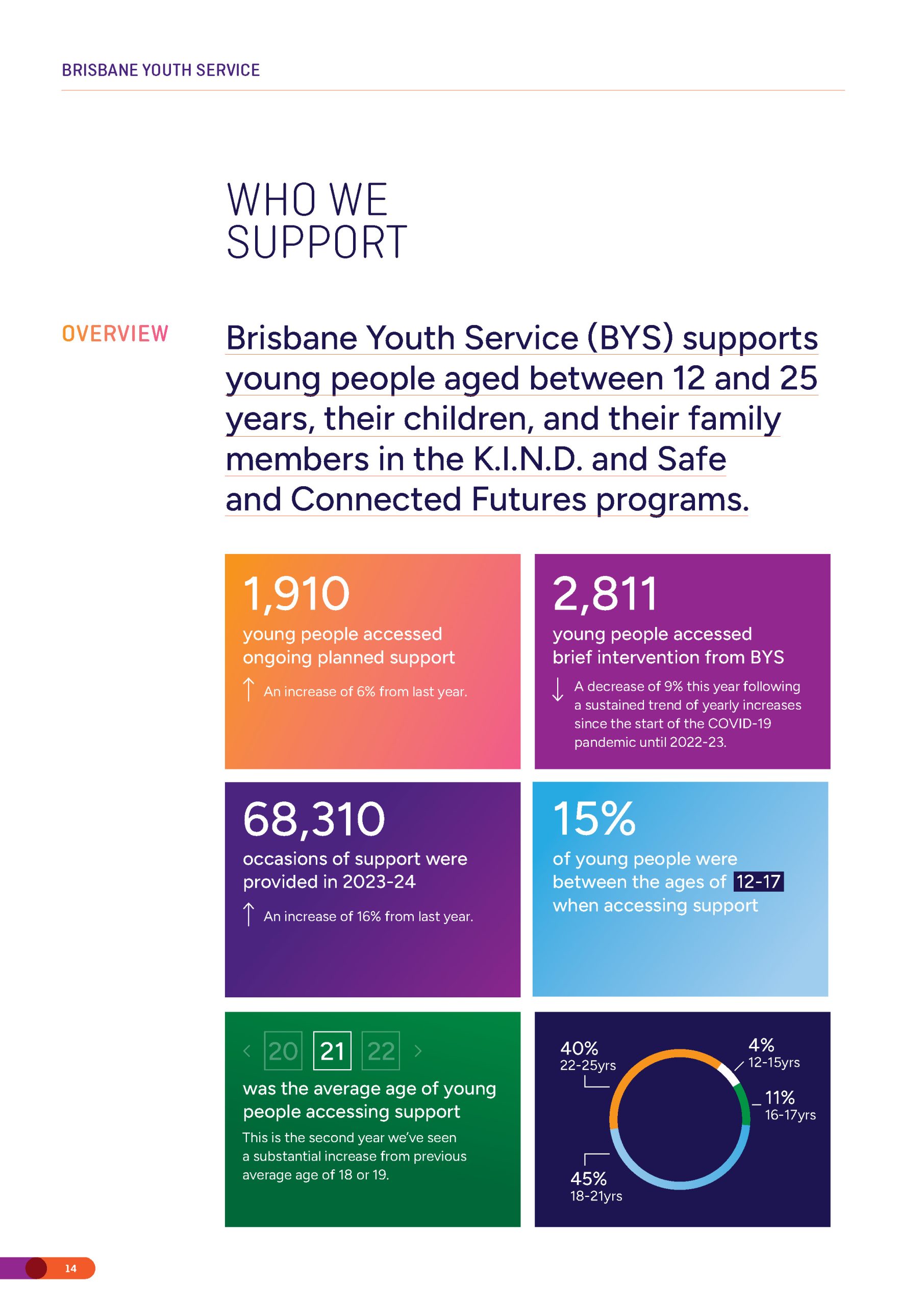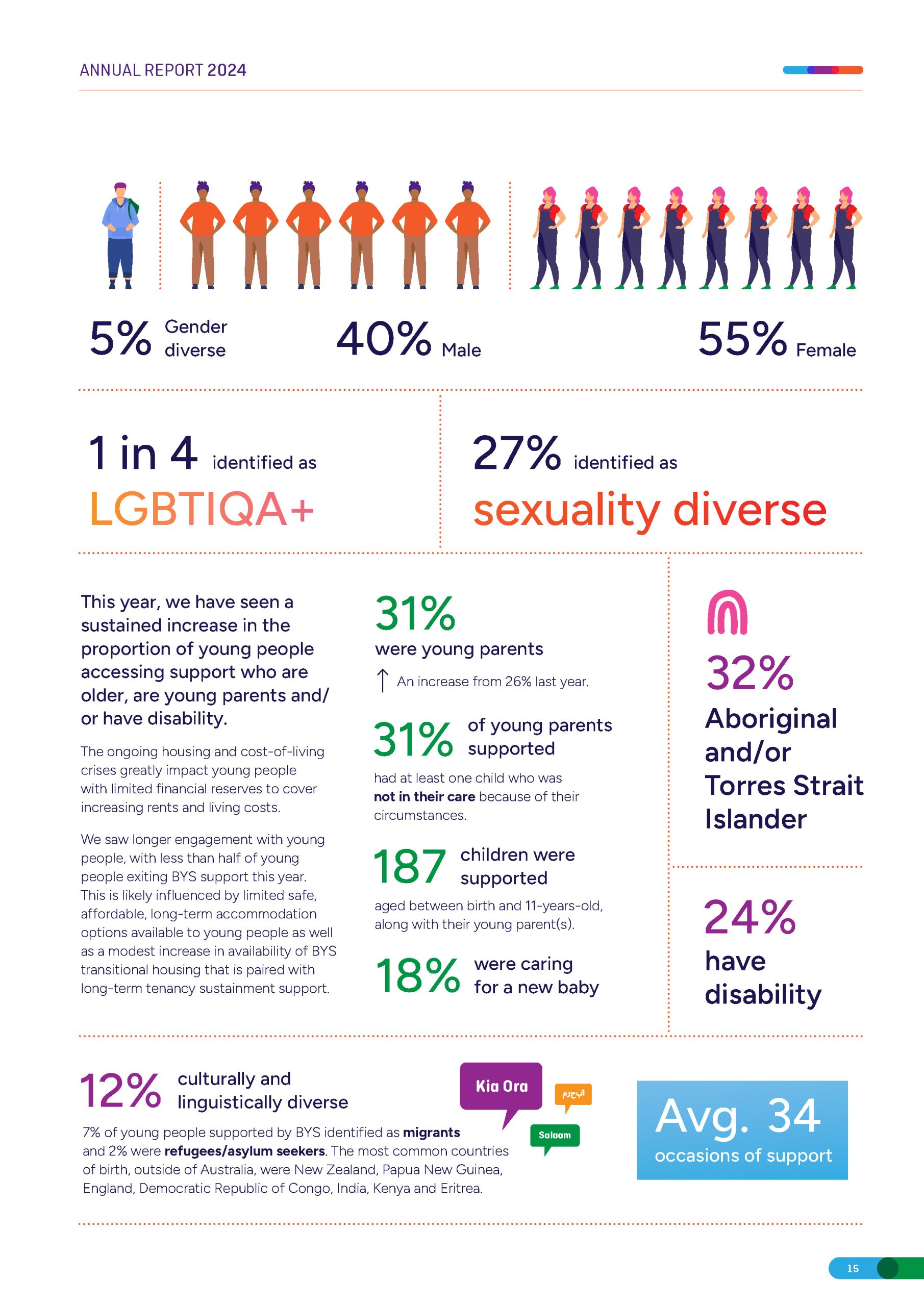The young people supported by Brisbane Youth Service (BYS) come from diverse backgrounds. They have varied life experiences and face systemic barriers to meeting their basic needs.
Young people’s top concern is their housing. It is often unstable, unsuitable, unaffordable, or unsafe.
Housing
In 2023-24, almost half of the young people who came to BYS were homeless (48%). This is about the same as last year, highlighting the ongoing impact of the housing and cost-of-living crises on young people in Brisbane. Young people must couch-surf, stay in motels, sleep in cars, or sleep rough when rents rise or private rentals are too expensive. In 2023-24, of the young people supported by BYS:
-
78% were living in unsafe, temporary, overcrowded, or unaffordable housing.
-
Almost 75% of young people who came to BYS sought help with housing.
-
1 in 2 said their housing was a crisis or serious situation.
“They have provided me and helped me with a roof over me and my family’s head I couldn’t be happier“
– Young Person
Violence
Family and relationship violence are common causes of homelessness for young people. This violence does not always end when they leave the family home or an intimate relationship. Those experiencing homelessness are often affected by ongoing forms of violence and abuse from others in their lives and the community. In 2023-24, of the young people supported by BYS:
-
3 in 4 had experienced family violence.
-
Almost 1 in 2 had experienced intimate partner violence.
-
1 in 3 had experienced physical assault or abuse.
-
1 in 10 said they were currently experiencing intimate partner violence (likely to be under-reported).
-
1 in 4 told us that violence was a crisis or serious concern in their lives.
After support from BYS
-
At the start of support, violence concerns are often under-recognised. Nonetheless, this year, more than half said their violence situations were a bit or much better after coming to BYS.
-
The proportion of young people who were in a crisis or serious violence situation dropped to 6%
“I am determined to be the best father I can be and to create a stable and loving environment for my daughter, breaking the cycle of violence and neglect that marked my own childhood.”
– Young Person
Mental Health
Mental health issues can impact young people’s access to safe, stable housing. Poor mental health can lead young people to homelessness. It often links to early trauma, family, or partner violence. Moreover, the stress of being homeless can worsen mental health. This stress includes financial problems, health issues, community violence, and lack of support.
In 2023-24:
- The proportion of young people who came to BYS with mental health diagnoses has remained high at 58%.
-
1 in 3 young people we met identified suicide risks.
-
1 in 5 identified self-harming behaviours.
Without support, mental health issues can be a barrier to young people being able to access and maintain safe and stable housing in the future.
“The support I’ve received has helped me realise that I’m stronger than I thought. Life now is completely different.“
– Young Person


